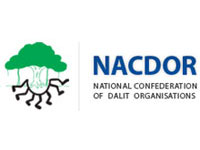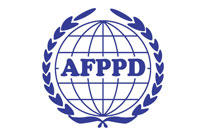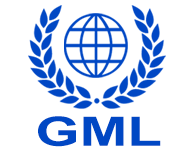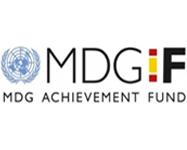Mixed results on commitments by international community, but Millennium Development Goals continue to bring successes.
New York, 19 September — Developing countries gained greater access to technologies, markets for their exports, some essential medicines and greater debt relief, but the international community must recommit to increasing aid and reaching an agreement on a development-oriented multilateral trade agreement to propel progress on the Millennium Development Goals (MDGs), according to a new report launched today by United Nations Secretary-General Ban Ki-moon.
“The MDGs have mobilized action from Governments, civil society and other partners around the world, with significant results,” Mr. Ban said. “Around the world, wherever we look, the MDGs have brought success—but not complete success.”
Recent MDG statistics show that millions of people’s lives have improved as countries have already met targets on reducing poverty, increasing access to safe water, improving the lives of slum dwellers and achieving gender parity in primary schools, and that remarkable progress in other areas means that more MDG targets can be achieved by 2015, the target date for the current Goals.
The MDG Gap Task Force Report 2013, entitled, “The Global Partnership for Development: The Challenge We Face,” tracks delivery on commitments listed under Millennium Development Goal 8—the global partnership for development.
“The picture is mixed,” Mr. Ban said. “We can do better. The best way to prepare for the post-2015 era is to demonstrate that when the international community commits to a global partnership for development, it means it and directs its resources to where they are most needed.”
To deepen the global partnership of UN Member States, international organizations, civil society, the private sector and others, the report makes many recommendations, including stopping tax evasion, strengthening manufacturing safety standards, dealing with unsustainable debt and improving financial regulation and the rules for global trade,while also asking all partners to live up to their commitments already made in support of achieving the MDGs.
Global economic slowdown continues to challenge MDG achievement
Official development assistance (ODA) declined for a second consecutive year in 2012, falling 4 per cent, down to $125.9 billion from $134 billion in 2011. The report noted the main reasons for reductions in aid were due to fiscal austerity measures by countries in the European Union.
Several countries, including EU members, either increased aid in 2012 or met the UN target of allocating 0.7 percent of gross national income to aid. The countries surpassing 0.7 per cent GNI were: Denmark, Luxembourg,Netherlands, Norway and Sweden. In 2012, Australia, Austria, Iceland, Luxembourg, New Zealand, Republic of Korea and Switzerland increased their aid budgets.
Bilateral aid (direct from one country to another) to the 49 least developed countries fell 12.8 per cent to about $26 billion in 2012. Bilateral aid to sub-Saharan Africa fell for the first time since 2007, with assistance totaling $26.2 billion in 2012, a decline of 7.9 per cent. Aid to landlocked developing countries and small island developing states, as well as multilateral and humanitarian aid, also fell.
Beyond aid from traditional donor countries, the report highlighted several other ways development assistance is provided through various channels and donors. Grants from private voluntary agencies totalled $30.6 billion in 2011, with agencies from the United States accounting for $23.3 billion of this amount. In 2011, Saudi Arabia reported providing $5.1 billion in assistance to other countries, and Turkey gave $1.3 billion. Other countries that do not report their contributions, but may provide significant amounts, include Brazil, China, India, South Africa and Venezuela.
According to the report, agreements during the Rio+20 conference on sustainable development in 2012 and recent meetings of the UN, G8, G20, World Bank Group and others point to efforts being made to find ways to enhance global development and reduce poverty through traditional means, as well as new, innovative methods and partnerships.
Greater market access brings benefits
Trade of developing countries and transition economies outpaced the global economy. According to the report,world trade grew at a slower rate in 2012 than in 2011, reflecting sluggish economic growth in developed countries.The developing country share of world trade rose to 44.4 per cent in 2012, which is a 12 percentage point increase compared to 2002.
The majority of developing-country exports enter developed-country markets duty-free today. Between 2000 and 2011, the proportion of developed country imports from developing countries admitted duty-free increased by more than 15 per cent, reaching 80 per cent in 2011. In 2012, the report said, G20 members reaffirmed their pledge not to impose protectionist measures and largely resisted creating new trade barriers.
In addition, remittance flows continued to grow despite migrants’ employment difficulties in developed countries, the report noted. Remittances to developing countries reached $401 billion in 2012, a 5.3 per cent increase over 2011.Remittances are expected to further increase in the near future.
Aid for trade has begun to decline, but many international trade policy commitments that favour developing countries, and in particular the least developed countries, are being implemented.
The report said that, after more than a decade, the Doha Round of global trade negotiations remains stalled.However, the Ninth Ministerial Conference of the World Trade Organization, which will take place in Bali, Indonesia, in December 2013, is an opportunity to break the impasse.
Debt relief guarantees for more poor countries
Most developing countries’ fiscal balances have improved, but the pace of fiscal adjustment and its impact on social expenditures is set to increase, the report said. As of April 2013, 35 out of 39 highly indebted poor countries (HIPCs) had reached the completion point where they would receive guaranteed debt relief. The report noted that while the link between debt relief and poverty-reducing expenditure is difficult to demonstrate, data shows that HIPCs have increased poverty-reducing expenditures as their debt service payments declined. In addition, the report noted that aggregate data presented masks the extent to which some developing countries remain critically indebted or are at significant risk of debt distress.
Access to affordable essential medicines
The report finds that prices for essential medicines in developing countries are still too high, but there has been some progress in access to medicines to treat HIV/AIDS, as well as an increase in local production of other essential medicines.
Essential medicines remain insufficiently available in developing countries, especially in low and lower-middleincome countries. Essential medicines were only available in 57 per cent of public and 65 per cent of private health facilities in 2012. Prices in low- and lower-middle-income countries were, on average, 3.3 times higher than international reference prices in public sector facilities and 5.7 times higher in private sector facilities. The report encourages pharmaceutical companies to make essential medicines more affordable and to develop new medicines most needed by developing countries.
Access to new technologies
Growth in the number of individuals using the Internet in developing countries grew 12 per cent in 2013, compared to 5 per cent in developed countries, the report said. Internet users in developing countries comprised 65 per cent of the total number of users worldwide in 2013, up from 40 per cent in 2005.
The penetration rates of Internet use in developing countries also increased to 31 per cent in 2013 from 25 per cent in 2011. The report said ICT services continued to become more affordable, but the difference in costs between developed and developing countries remained substantial.
According to the latest estimates for 2013, the number of mobile cellular subscriptions in the world rose to 6.8 billion, nearly even with the world population of 7.1 billion. Although global growth in mobile cellular subscriptions has recently tapered off, the report said growth continued in developing countries. The penetration rate of mobile cellular subscriptions in the least developed countries increased to 42 per cent in 2011, up from 34 per cent in 2010.
About the MDG Gap Task Force
The MDG Gap Task Force, co-chaired by the UN Department of Economic and Social Affairs and the UN Development Programme, was created by the Secretary-General of the United Nations in May 2007 to improve monitoring of the global commitments contained in MDG 8, the Global Partnership for Development. The Task Force integrates more than 30 UN and other international agencies, and its main purpose is to systematically track existing international commitments and to identify gaps and obstacles in their fulfillment at the international, regional and country level in the areas of official development assistance, market access (trade), debt sustainability, access to essential medicines and new technologies.
For more information, press materials and an inter-agency media contact list, see www.un.org/millenniumgoals










